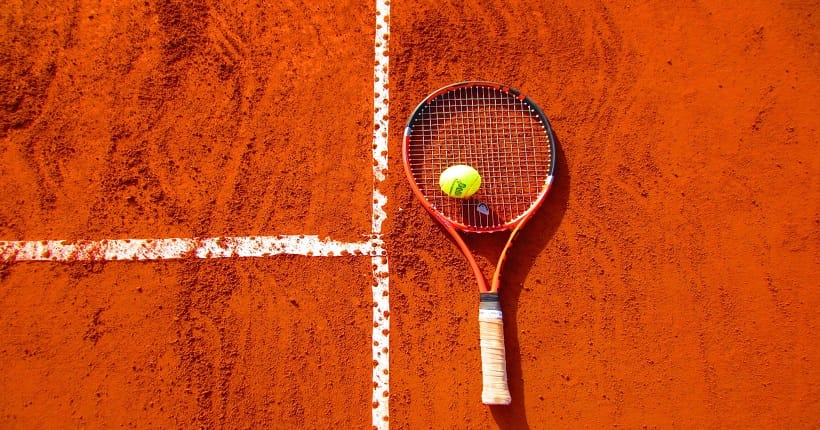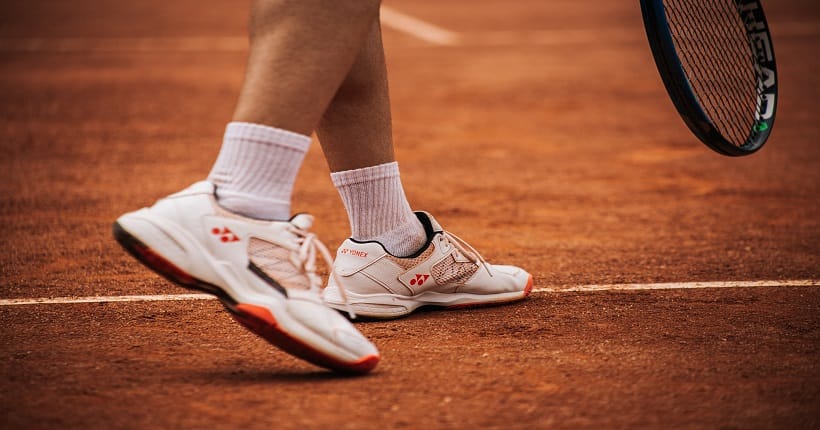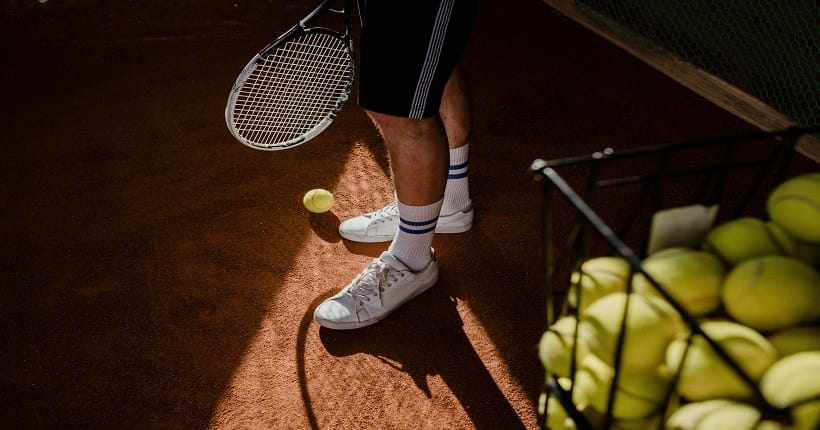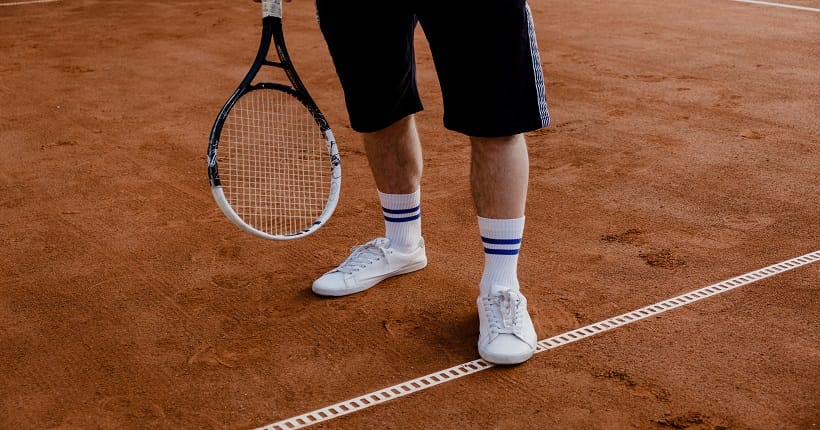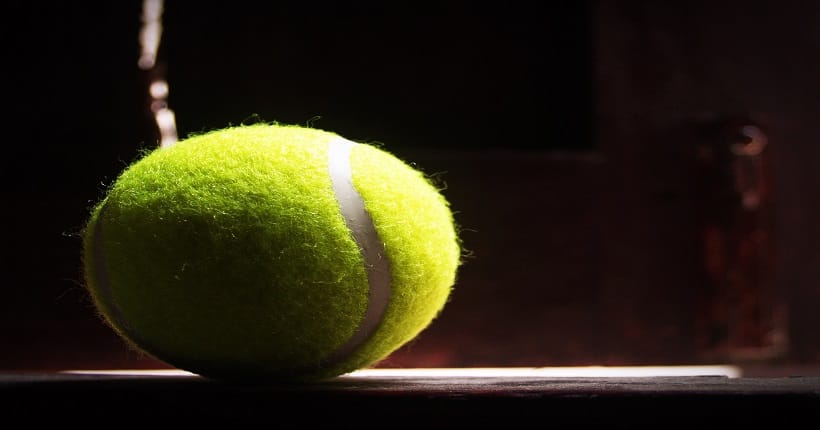How Many Challenges In Tennis?
In tennis, there are two challenges allowed per player during a match. Now let’s dive into a brief introduction to the challenges system in tennis.
Tennis, a widely-popular racquet sport, is known for its fast-paced rallies and strategic gameplay. With its history dating back to the 19th century, tennis has evolved into a sport that embraces technology to ensure fairness and accuracy in officiating. One such technological advancement is the introduction of challenges, which allow players to contest referee decisions during a match.
These challenges, limited to two per player, can be used to question line calls, overrules, or other disputed decisions. With the help of advanced camera systems, players can challenge a call, leading to a review where the decision either confirms the original call or overturns it. The challenges system adds an extra layer of excitement and transparency to the game, ensuring that players have a fair chance to question questionable decisions.

Credit: www.thesun.co.uk
The Role Of Challenges
Tennis, as a sport, has evolved significantly over the years. From wooden rackets to advanced technology, the game has seen several transformations. One such notable change that has revolutionized the way tennis is played is the introduction of challenges. With the advancement in technology, players and officials now have the power to challenge the decisions made by the umpire. These challenges not only add an element of excitement to the game but also ensure fairness and accuracy in the outcome.
The Evolution of Challenges in Tennis
Challenges in tennis have come a long way since their inception. Earlier, players had to rely solely on the judgment of the umpire, leading to instances of human error affecting the outcome of matches. However, with the advent of challenge systems, such as Hawk-Eye technology, players and officials now have access to a range of technologies that assist in making accurate decisions. This evolution has not only enhanced the game experience for players and spectators but has also raised the bar of competitiveness in the sport.
The Impact of Challenges on Game Dynamics
The introduction of challenges in tennis has had a significant impact on the dynamics of the game. Players now have the opportunity to contest the line calls made by the umpire, challenging close decisions and potentially turning the tide of a match. This added layer of strategy has not only heightened the intensity on the court but has also made the sport more engaging for viewers. The thrill of seeing a player successfully challenge a crucial call and overturn the decision adds an element of suspense and drama to the game, captivating fans worldwide.
Benefiting Players and Ensuring Fairness
The primary purpose of challenges in tennis is to benefit the players and ensure fairness in the game. With the ability to challenge decisions, players have the opportunity to correct potentially incorrect rulings, thus promoting a sense of justice and fair play. This system acts as a check and balance, reducing the possibility of human error and ensuring that the correct calls are made. Moreover, challenges contribute to the overall credibility and integrity of the sport, allowing players to have faith in the accuracy of the outcome.
The role of challenges in tennis is crucial. From their evolution over the years to their impact on game dynamics, challenges have brought about a positive change in the sport. They not only provide players with a means to contest decisions but also ensure fairness, accuracy, and increased engagement for spectators. As tennis continues to evolve, one thing is certain – challenges have become an integral part of the game, enhancing competitiveness and the overall experience for everyone involved.
The Technology Behind Challenges
Challenges have become an integral part of the modern game of tennis, adding an element of excitement and uncertainty to crucial moments of a match. But have you ever wondered about the technology that makes these challenges possible? In this article, we will explore the fascinating world of Hawk-Eye technology and how it has revolutionized the game.
Introduction to Hawk-Eye Technology
Hawk-Eye technology, developed in the early 2000s, is a state-of-the-art system that uses cameras and computer algorithms to track the flight of the tennis ball with remarkable accuracy. It allows players to challenge calls made by the line judges, with the objective of overturning incorrect decisions and ensuring a fair outcome.
How Does Hawk-Eye Work?
Implementing Hawk-Eye technology involves setting up multiple high-speed cameras around the court, which capture different angles and perspectives of the ball’s trajectory. These cameras work together to create a three-dimensional representation of the ball’s path.
Once the ball is struck, the system analyzes the images and calculates the ball’s position and trajectory using custom software. Hawk-Eye can accurately determine if a shot is within the court boundaries or whether it has landed outside. This information is then displayed on the scoreboard, allowing players and spectators to witness the outcome.
Implementing Challenges in Tennis Tournaments
As the popularity of Hawk-Eye technology grew, it was gradually introduced in major tennis tournaments around the world. The system has become an essential tool for players, ensuring that contentious calls can be reviewed and corrected, ultimately enhancing the integrity of the game.
Using Hawk-Eye challenges involves a precise protocol. Players have a limited number of challenges per set, and if a challenge is successful, they retain the right to challenge again. However, if a challenge is unsuccessful, it counts as one of their allocations. This rule prevents players from making frivolous challenges and encourages them to use their challenges strategically.
Furthermore, the technology allows for a quick resolution to challenges, saving time and avoiding prolonged disruptions of the match. This feature enhances the overall flow of the game, keeping players and spectators engaged without unnecessary delays.
Hawk-Eye technology has had a monumental impact on the way tennis matches are officiated. It has revolutionized the game by providing players with the means to challenge calls and ensuring fair outcomes. The implementation of Hawk-Eye challenges in tournaments highlights the commitment of the tennis industry to embrace technology for the betterment of the sport.
The Rules And Limitations Of Challenges
Tennis is an intense and thrilling sport, and challenges play a crucial role in ensuring fair play. The rules and limitations of challenges in tennis add an extra layer of excitement and strategy to the game. Players have a limited number of challenges, and using them effectively can make a significant difference in the outcome of a match. In this article, we will explore the rules and limitations of challenges in tennis, including the number of challenges allowed per player, successful and unsuccessful challenges, and instances where challenges cannot be used.
The Number of Challenges Allowed per Player
In professional tennis matches, each player is usually allowed a certain number of challenges per set or match. The specific number of challenges can differ depending on the tournament or level of play. For instance, in Grand Slam tournaments such as Wimbledon or the Australian Open, players are typically allowed three challenges per set. However, in other tournaments or lower-level competitions, the number of challenges may be lower.
Successful and Unsuccessful Challenges
A successful challenge occurs when a player disagrees with a line call made by the umpire or linesperson and challenges the call. If the challenge shows that the ball was indeed out, the player wins the challenge, and the point is replayed. On the other hand, if a challenge shows that the ball was in, the player loses the challenge, and the opponent is awarded the point.
Instances Where Challenges Cannot Be Used
While challenges are a valuable tool for players, there are certain instances where they cannot be used. The most common example is during clay court matches. Clay courts are notorious for leaving visible marks, which players can use to determine the accuracy of a call. As a result, challenges are typically not allowed on clay courts since players can visually confirm the location of the ball using the marks left on the surface.
Controversies And Challenges In Tennis
Tennis, like any other sport, is not immune to controversies and challenges. Over the years, the implementation of new technology and the rise of challenges has played a significant role in shaping the way matches are played and decisions are made. Whether it’s a disputed call or a contentious ruling, the controversies surrounding challenges have become an integral part of the sport. In this section, we will explore some of the main debates, famous controversies, and methods used to address disputed calls and resolve disagreements.
Debates Surrounding the Use of Challenges
Since the introduction of challenges in tennis, there have been ongoing debates regarding their impact on the game and fairness. Some argue that challenges disrupt the flow of the match, slowing down the momentum and intensity. On the other hand, proponents of challenges argue that they provide players with a fair opportunity to rectify incorrect calls, ultimately ensuring a more accurate outcome. The use of technology such as the Hawk-Eye system and instant replay has undoubtedly helped in reducing human errors, but it has also sparked arguments on whether it takes away from the human element of the sport.
Additionally, there have been discussions about the number of challenges allowed per player. While some believe that the current limit of three challenges per set strikes the right balance, others feel that increasing or decreasing the limit could lead to a more just and efficient game. The constant back and forth among players, umpires, and the challenge system has become a source of intrigue and controversy, adding an extra layer of excitement to the game.
Famous Controversies Due to Challenges
The implementation of challenges has not been without its fair share of famous controversies. One of the most notable incidents occurred during the 2004 US Open semifinal between Serena Williams and Jennifer Capriati. Williams, trailing in the third set, made a challenge on a Capriati shot that was initially called in. The Hawk-Eye replay showed that the ball was clearly out, but due to a technical malfunction, the chair umpire’s decision stood. This incident sparked a heated debate on the reliability of challenges and the necessity for backup systems.
| Year | Tournament | Controversy |
|---|---|---|
| 2009 | Wimbledon | John Isner and Nicolas Mahut’s marathon match resulted in extraordinary reliance on challenges, with numerous disputed calls throughout the duration of the match. |
| 2013 | Australian Open | During a match between Novak Djokovic and Stan Wawrinka, a controversial call made by an on-court official led to a disputed point and emotional reactions from both players. |
Addressing the Disputed Calls and Resolving Disagreements
In order to address disputed calls and resolve disagreements, tennis authorities have implemented various measures. Firstly, the utilization of technology such as the Hawk-Eye system has provided players with a means to challenge decisions. This system tracks the trajectory of the ball and generates a visual representation, which can be used as evidence to support or overturn a call. Additionally, the introduction of instant replay has allowed umpires to review crucial moments of the game, making more informed decisions.
Moreover, the presence of an on-court review system allows players to bring their concerns directly to the chair umpire. This method of dispute resolution ensures that players have a voice in the decision-making process and provides a platform for communication between athletes and officials. Tennis authorities continuously strive to strike a balance between maintaining the integrity of the game and minimizing errors, all while keeping the audience engaged and entertained.
The Future Of Challenges In Tennis
The use of challenges in tennis has greatly impacted the sport and has revolutionized the way decisions are made on the court. With the rapidly advancing technology and the desire for fairness and accuracy, it is crucial to explore the future of challenges in tennis. This article will discuss the advancements in technology and challenges, potential improvements to the challenge system, and the importance of ensuring consistency and fairness in decision-making.
Advancements in Technology and Challenges
Technology has played a significant role in enhancing the effectiveness and efficiency of challenge systems in tennis. One of the major advancements is the implementation of Hawk-Eye technology. This sophisticated system uses multiple cameras to track the trajectory of the ball and provide a comprehensive analysis of its flight path. By using this technology, players and officials can challenge close calls, and the system will provide an accurate and unbiased decision.
The integration of Artificial Intelligence (AI) into challenges is another exciting development. AI algorithms have the potential to analyze vast amounts of data and make predictions with high accuracy. This could be utilized to improve the accuracy of line calls and assist officials in making more informed decisions. With the continuous advancement of technology, we can expect even more precise and reliable challenge systems in the future.
Potential Improvements to the Challenge System
While technology has significantly improved the accuracy of the challenge system, there are still opportunities for further enhancements. For example, introducing a time limit for challenges could help expedite the decision process and prevent unnecessary delays during a match. Additionally, providing players and coaches with real-time access to the challenge system data could enable them to strategize and make more informed decisions about when and how to use their challenges.
Another potential improvement is the incorporation of player feedback. Allowing players to voice their opinions and concerns about the challenge system could lead to valuable insights and potential adjustments. This collaborative approach could help create a more inclusive and player-centric challenge system that is widely accepted by all participants in the sport.
Ensuring Consistency and Fairness in Decision-Making
Consistency and fairness in decision-making are of utmost importance in any sport, and tennis is no exception. One way to achieve this is by establishing clear and standardized guidelines for when challenges can be made. Uniformity in the rules of challenges will help eliminate confusion and ensure fairness for both players and officials.
Furthermore, continuous training and education for officials on the use of challenge systems will help maintain consistency in decision-making. Consistent interpretation of the system’s outcomes will minimize discrepancies and provide a fair environment for players to compete in.
Regular evaluations and updates to the challenge system will also be crucial to address any shortcomings and adapt to the evolving needs of the sport. By incorporating feedback from players, coaches, and officials, the challenge system can continuously evolve to meet the demands of modern tennis.
Frequently Asked Questions For How Many Challenges In Tennis?
How Many Challenges Do You Get In Tennis Wimbledon?
In tennis Wimbledon, players have the opportunity to challenge a call electronically.
How Many Challenges Are There In A Grand Slam?
There are four challenges in a Grand Slam: the Australian Open, French Open, Wimbledon, and US Open.
Do You Lose A Challenge In Tennis If You Are Correct?
If you are correct in a challenge, you do not lose in tennis.
How Many Total Games Can Be Played In Tennis?
In tennis, a total of six games can be played in a set, and the number of sets required to win a match can vary. Typically, a match consists of three sets for men and two sets for women, however, this can vary depending on the tournament or level of play.
How Many Challenges Are Allowed In Tennis?
In tennis, each player is allowed up to three challenges per set to dispute a line call made by the umpire.
What Happens If A Tennis Player Runs Out Of Challenges?
If a tennis player runs out of challenges and a call is in dispute, they have no way to challenge the call and must accept the umpire’s decision.
Conclusion
With various challenges in tennis from technical skills to mental toughness, the game demands relentless efforts and constant adaptation. Each match presents unique obstacles that players must overcome, pushing their limits and showcasing their resilience. From mastering different strokes to strategizing tactics, tennis unfolds as a captivating sport filled with relentless challenges and exciting opportunities for growth.
So, whether you’re a beginner or an experienced player, embrace the challenges and strive for excellence on the court.

